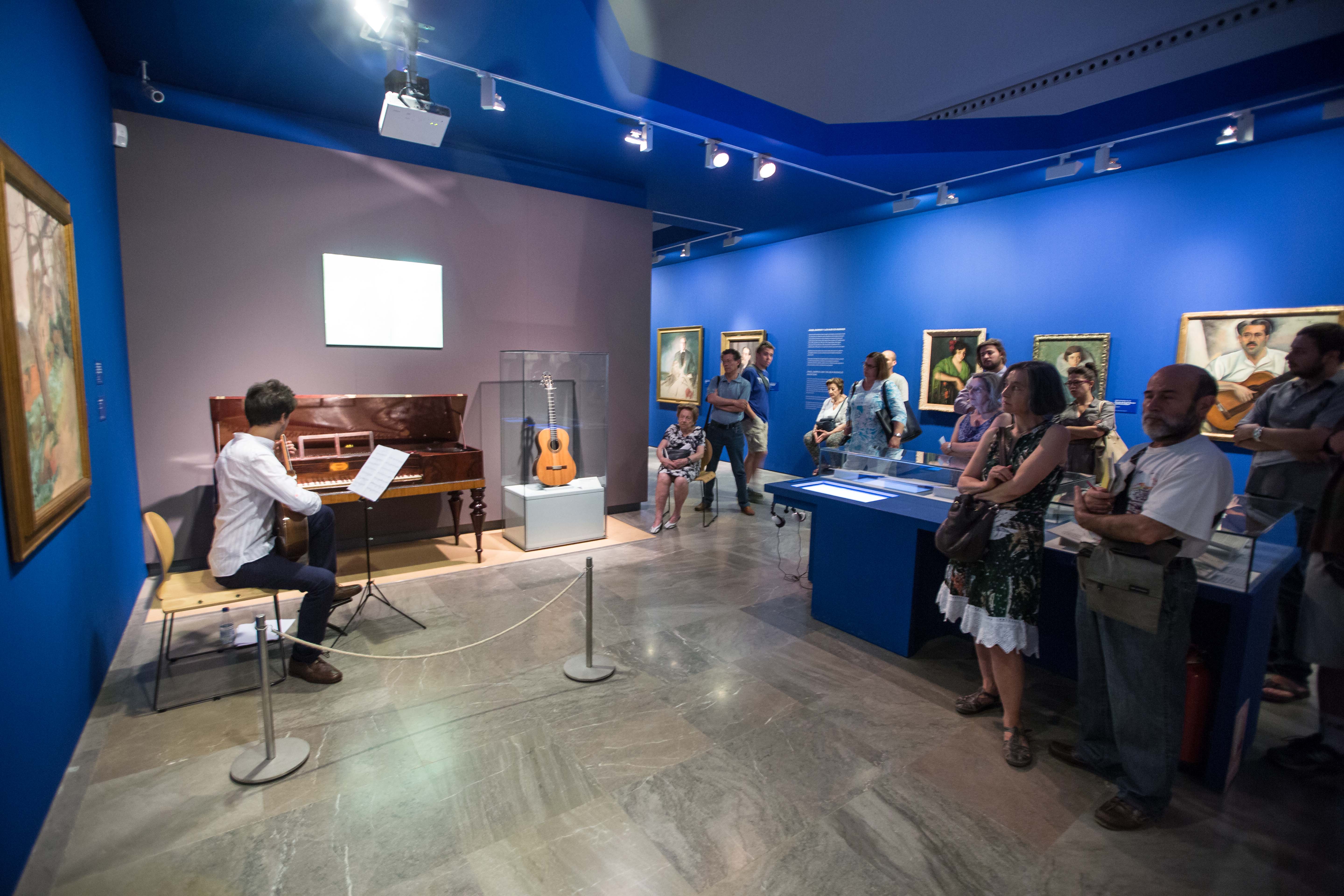The exhibition entitled ‘Ángel Barrios. Creativity in the Alhambra’ currently being held in the temporary exhibition room of the Granada Fine Arts Museum in the Palace of Charles V has received a total of 30,560 visitors since it was officially inaugurated on 12th June.
According to figures produced by the Analysis and Data Unit of the Council of the Alhambra and Generalife, an average of 510 people have visited the exhibition every day, most of whom were Spanish tourists. A significant number of people from Granada (over 1500) have also climbed the hill to the Alhambra to visit the exhibition and to take part in the guided visits with live music that have been organized at the weekends.
As for the special visits, 102 people have so far signed up, 0.77% of the total number of visitors, and 96 people have taken part in the Guided Visits programme, 0.72% of the total.
In addition, from today all those interested in the life and work of Ángel Barrios (1882-1964) can buy the book of research studies published to mark the 50th anniversary of his death, which is now on sale in the Alhambra bookshops. This book is published by the Council of the Alhambra and Generalife in collaboration with the Musical Documentation Centre of Andalusia and is set to become a milestone in academic research into Barrios, a musician and composer from Granada who had very close links with the Alhambra.
Reynaldo Fernández, curator of the exhibition and editor of the book, praised the work of the experts who contributed to it. Their studies and experiences combine to offer a new updated view of significant aspects of the life and work of Ángel Barrios, as well as situating and contextualizing the city and the Monument at a particular moment in history. These include the first-hand personal account of the composer’s daughter, Ángela Barrios, whose godfather was Manuel de Falla.
The book also offers other views of Ángel Barrios and creativity in the Alhambra such as the architectural study by Aroa Romero, who analyses the set of buildings consisting of the Arabic Baths and the Nasrid era house in which the Barrios family lived, and Antonio Martín Moreno who studies the musical atmosphere in Granada in which the artist grew and developed. Ismael Ramos updates information about the life of the maestro Barrios and his work as a guitarist. José Antonio González Alcantud immerses us in the Alhambra the family lived in through the eyes of Ángela Barrios. Ignacio Henares Cuéllar takes us on a journey through the concepts and transformations that formed the aesthetics of painting in the Edad de Plata (so-called Silver Age of Spanish Culture in the early 20th Century). Emilio Escoriza paints a picture of the animated debates and discussions at “El Rinconcillo” and “El Polinario” in the same era. Emilio Casares Rodicio investigates the music Ángel Barrios composed for the stage, its different phases and styles. Francisco J. Giménez Rodríguez reveals the central role of dance in the work of the Granada composer. Ramón Sobrino delves into the pianistic side of Barrios and his way of composing. Maria Encina Cortizo deals with the richly inspiring songs and fluid melodies that characterized his vocal music. Joaquín López González explores the film music and the soundtracks by Ángel Barrios within the context of cinema at that time. Soledad Asensio Cañadas and Inmaculada Morales Jiménez offer a perspective of the new inventions in which Angel Barrios was involved and the book’s editor Reynaldo Fernández Manzano discusses flamenco and the transformations of the concept and the opinions of this art form that arose during the Edad de Plata.
In addition, those interested can still take advantage of the guided visits to the exhibition with live music, which must be reserved in advance at the offices in the Corral del Carbón, in the Calle Mariana Pineda s/n, or by email to alhambraeduca.pag(at)juntadeandalucia.es or by telephone calling 958 57 51 26. There are a limited number of spaces as for best enjoyment groups are organized into a maximum of fifteen people. The exhibition has been organized by the Council of the Alhambra and Generalife in collaboration with the Musical Documentation Centre of Andalusia and explores the life and work of the musician and composer from Granada Ángel Barrios (1882-1964), on the occasion of the 50th anniversary of his death.
For more information, please visit www.alhambratienda.es
www.alhambratienda.es





 Contact
Contact
















